Green architecture – Vertical Screen World Headquarters
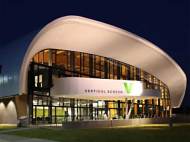 The new headquarters building of the applicant screening firm Vertical Screen represents an interesting example of sustainable architecture that recently received LEED Platinum certification. The project showcases nearly seamless integration of sustainable features into the building’s interesting envelope, and it is also noticeable by the extensive use of reclaimed materials and renewable sources in its construction.
The new headquarters building of the applicant screening firm Vertical Screen represents an interesting example of sustainable architecture that recently received LEED Platinum certification. The project showcases nearly seamless integration of sustainable features into the building’s interesting envelope, and it is also noticeable by the extensive use of reclaimed materials and renewable sources in its construction.
Designed by Erdy McHenry Architecture LLC, the Vertical Screen headquarters 4,645 square-meter (50,000 square foot) building is located on nine acres of a site that was once occupied by the Johnsville Naval Air Warfare Center, where the Mercury, Gemini and Apollo mission astronauts trained in the 1950s and 1960s.
A roof-mounted solar photovoltaic array has 900 panels (each containing 40 cylindrical modules) capable to generate about 20 percent (or around 163 kilowatts of power) of the building’s total electricity needs.
Plenty of daylight is ensured by 12-meter-high (40-foot-high) glass curtain walls on the east and west sides of the building and a 3-meter-high (10-foot-high) glass on the south wall. In order to lower power consumption needed for lighting, LED lighting is combined with a Building Automation System (BAS). BAS increases the power efficiency by controlling the amount of lighting needed in the particular time. It controls an automated shading system in order to decrease the light and lower the warmth, and it controls the lights by dimming or turning them off when needed.
A geothermal HVAC system that uses 64 closed ground-loop wells installed at a depth of 150 meters (500 feet) to utilize the Earth’s mean temperature to heat and cool the building. A Structured Insulated Panel (SIPS) roof deck system provides an extremely strong, airtight structure that is highly energy efficient, with an R-Value of 38.
Rainwater is collected by a harvesting system that stores rainwater from the roof in a 15,000 gallon underground storage tank. Stored water is filtered and used to flush toilets and urinals, as well as to irrigate four interior green roofs and a living wall.
Building materials are mostly recycled or rapidly renewing resources, and it utilizes Forest Stewardship Council (FSC) certified wood throughout, bamboo doors and cabinets, wheat board cabinets, cork and linoleum floors, and Kirei board toilet partitions. Examples of recycled materials are carpeting made from used car tires, countertops made of recycled glass, concrete with byproduct fly ash or slag composition, building slab and parking lot underlayments made of recycled masonry.
During the first six months of operation, the new Vertical Screen world headquarters building has utilized more than 60 percent less energy and more than 70 percent less municipal water compared to a similar-sized traditional office building.

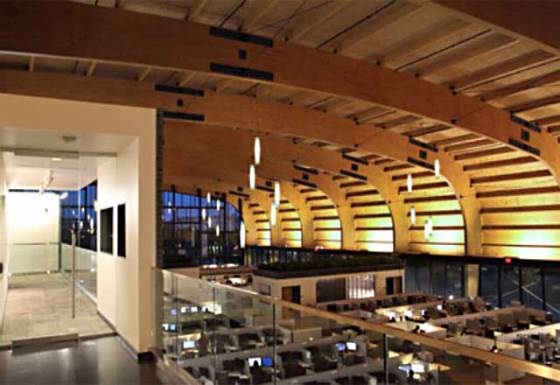
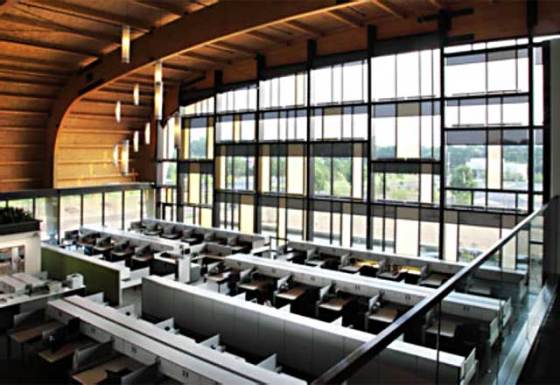
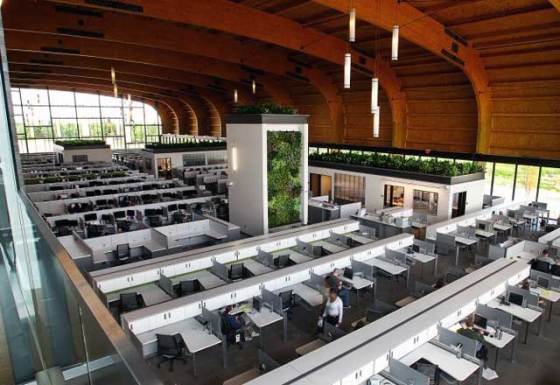
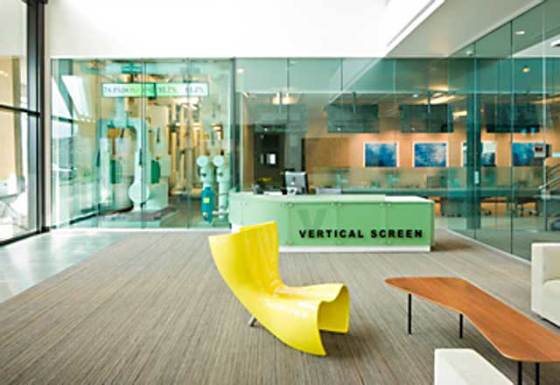








Very nice form, but there is too much waster vertical space in the cubicles area.
Hope it isn’t cold during winter!